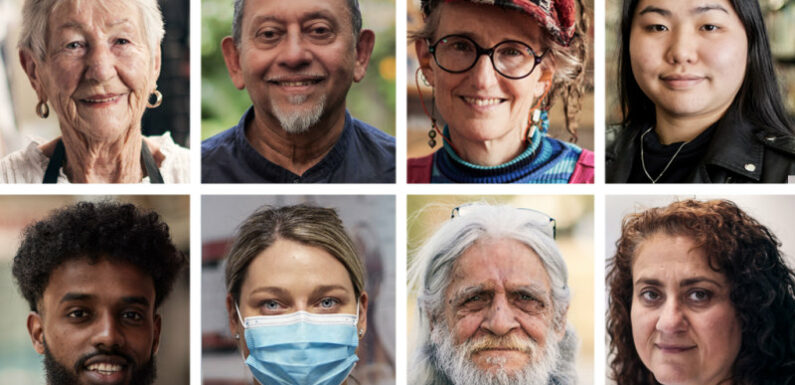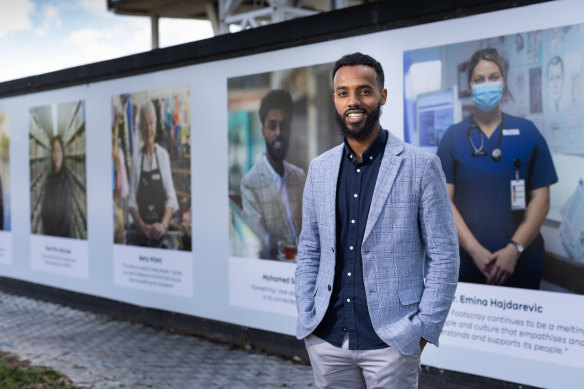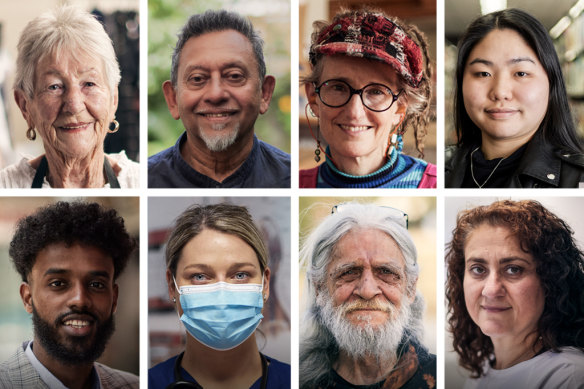
As a child, Mohamed Semra had a severe stutter. He found it difficult to articulate his thoughts at school and often found himself in trouble for it.
The young boy had moved to Melbourne’s west at the age of six with his mother and siblings as Sudanese refugees, and was also grappling with the challenge of settling into a new country and community.
Mohamed Semra is among the eight locals profiled in Faces of Footscray.Credit:Jason South
An English teacher at his high school saw potential in Semra’s writing and enrolled him in speech therapy, after which he joined the school debating team.
Now 24, Semra – the co-founder and CEO of social enterprise Endeavour Youth Australia, and a nominee for Young Australian of the Year – pays it forward by helping others find their voices, too.
“I want to make it easier for other people that come after me, especially younger people,” he says. “Speaking another language and being from a refugee background does come with barriers, and it’s important for me to use my lived experience as a means to empower and teach others.”
Semra is one of eight community members featured in Faces of Footscray, the first arts commission in a collaboration between Plenary Health, which is delivering the hospital in partnership with the Victorian government and Western Health, and the hospital’s arts partner, Footscray Community Arts Centre.
The project combines video and photography by local visual artists Mika Tran and Thuy Vy. Large-scale portraits of the participants feature on the new Footscray Hospital’s hoarding, linking to short online films telling each person’s story.
Faces of Footscray turns what would otherwise be unremarkable scaffolding into something more significant, connecting the community to the new hospital through sharing everyday stories. This intersection of public health and art highlights the importance of art to foster positive community connections.
The participants, who are either self-nominated or nominated by someone else in their community, illustrate the diversity of the western suburbs. Alongside Semra, other interview subjects include Betty Millett who, at 86, is Western Health’s longest-serving volunteer – her mother was also a volunteer, as are her granddaughters; Indigenous elder Uncle Larry Walsh; and visual artist and disability advocate Larissa MacFarlane. Each person offers a different perspective of what it means to belong to a community, spotlighting the cultural melting pot of Melbourne’s west.
Tran, who is a filmmaker by trade, has lived in the western suburbs for the last 15 years. “It’s probably the only place where I’ve really felt a sense of genuine belonging,” she says. “A lot of the participants that I interviewed for Faces of Footscray echoed this sentiment… I feel the safest when I walk through the streets of Footscray, and I feel a sense of acceptance which I don’t always feel in other areas.”
Faces of Footscray, clockwise from top left: Betty Millett, Ray Pereira, Larissa MacFarlane, Paw K’Pru Say Kaw, Professor Vasso Apostolopoulos, Uncle Larry Walsh, Dr Emina Hajdarevic, Mohamed Semra.Credit:Thuy Vy
She brought this sense of community to the project, collaborating with photographer Vy to create unified visions of each participant’s story. The pair got to know the subjects individually, allowing their stories to lead how the portraits and videos would be presented.
“Some of them have more symbolic shots, and others are a bit more literal,” Tran explains. “It emerged out of what the people were talking about – we really tried to centre the people and their stories first, rather than try and impose our ideas of who they were.”
The videos contain some surprising insights. In his short, Semra names the barbershop as an important community hub, and a supportive male space. “It’s a place that is for us, by us – you leave feeling good because you got a nice haircut, but you’ve had a chance to have a conversation with other males from your community,” he says. “It’s like unofficial therapy.”
Through his participation in Faces of Footscray, Semra hopes to send a positive message to other young people, especially those with similar backgrounds, in the face of discrimination. “A lot of the time, our narrative isn’t controlled by us, especially for African migrants,” he says. “What allowed me to persevere and go on was owning my story … I really want to give representation to young people, as well as to African migrants and refugees.”
For Tran, a project like this allows her to give back to the community, as she uses her work to celebrate the extraordinary achievements and lives of ordinary people. She points to Professor Vasso Apostolopolous, who was born in Footscray Hospital and has gone on to do trailblazing work in immunotherapy, as an example of a local hero: “She’s someone whose work has actually influenced the medical field globally, and she’s just down the road working at VU.”
“As a storyteller, it’s often the local stories that are really, really inspiring,” Tran says. “We don’t necessarily have to look around the world to find all those great, magnificent stories – they can be right here in our own neighbourhood. The sense of potential that exists here is exciting.”
A cultural guide to going out and loving your city. Sign up to our Culture Fix newsletter here.
Most Viewed in Culture
From our partners
Source: Read Full Article

